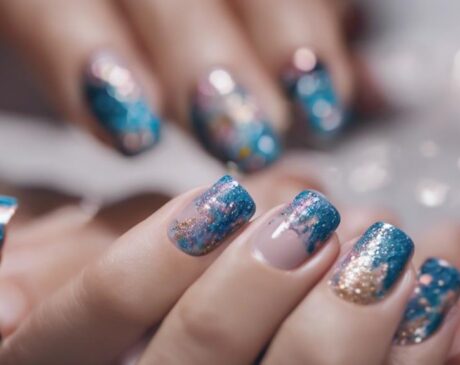Does Blowing on Nails Help Them Dry?
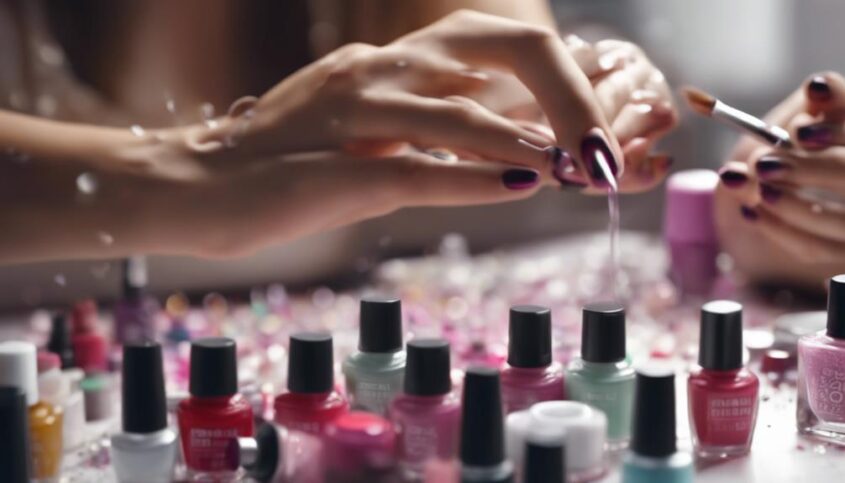
Blowing on your nails won't speed up drying significantly. It might add moisture and bacteria. Quick-dry polish and LED lamps work better. Factors like polish type and humidity affect drying. Quick-dry polish sets faster. Blowing can introduce oils and particles. Consider other methods for better results. Get the lowdown on efficient drying techniques.
Key Takeaways
- Blowing on nails doesn't significantly speed up drying due to the evaporation process of nail polish solvents.
- Introducing moisture from blowing on nails can increase drying time and the risk of smudges.
- Blowing on nails may introduce oils and impurities, affecting the finish and causing particles to stick.
- Quick-dry nail polish formulas or using fans are more efficient alternatives for faster drying.
- Consider avoiding blowing on nails and opt for quick-dry products to achieve a glossy finish without delays.
Myth or Fact: Blowing on Nails
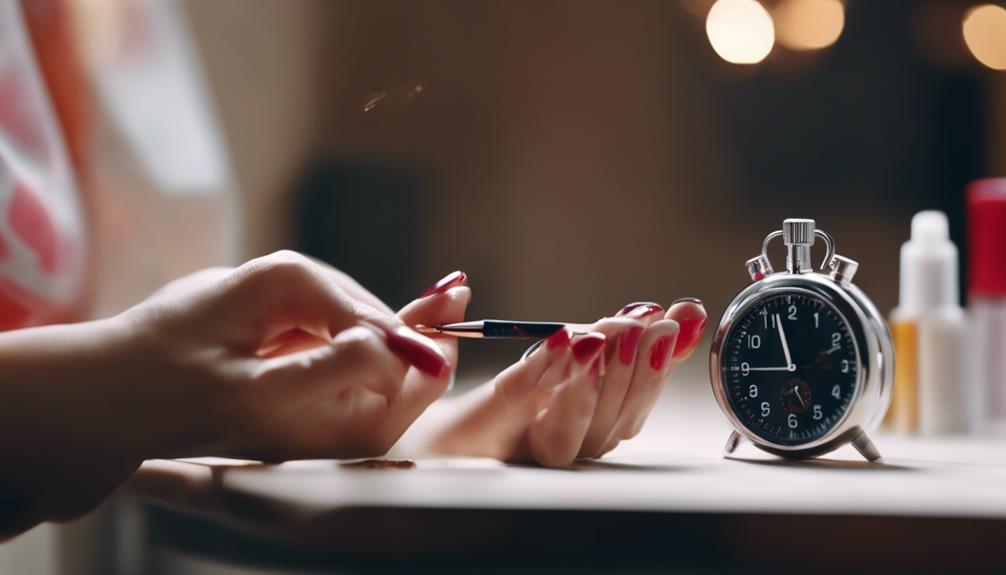
Blowing on nails to help them dry faster is a common practice among many people, but does it actually work? You might find it surprising that this age-old trick isn't as effective as you may have thought. While the act of blowing on your nails might create a temporary sensation of drying due to the air movement, it doesn't speed up the overall drying process significantly.
If you're someone who values efficiency and wants your nails to dry quickly, there are more effective methods to consider. Instead of relying on blowing, try waving your hands gently to promote air circulation around your nails. Additionally, using a quick-dry top coat or nail drying spray can be more beneficial in expediting the drying process.
Ultimately, the choice is yours, but knowing the facts can help you make informed decisions. Don't feel restricted by old habits – embrace new techniques that can save you time and frustration in your nail care routine.
The Science Behind Nail Drying
Understanding the chemical reactions involved in the nail polish drying process can shed light on why certain techniques, such as blowing on nails, may not be as effective as believed. When you apply nail polish, it contains solvents that evaporate to help the polish dry. These solvents include ingredients like ethyl acetate and butyl acetate. As these solvents evaporate, they leave behind a hardened film of colored nail polish on your nails.
Blowing on your nails can create the illusion of drying them faster because of the cool sensation and airflow, but it doesn't significantly speed up the drying process. In fact, blowing on your nails may introduce moisture and bacteria from your breath, which could potentially ruin your fresh polish job. It's best to let the solvents in the polish evaporate naturally or use other proven methods like quick-dry nail polish formulas, drying sprays, or LED nail lamps for more efficient drying.
Understanding the science behind nail drying can help you achieve perfectly polished nails without relying on ineffective techniques.
Factors Affecting Nail Drying Time
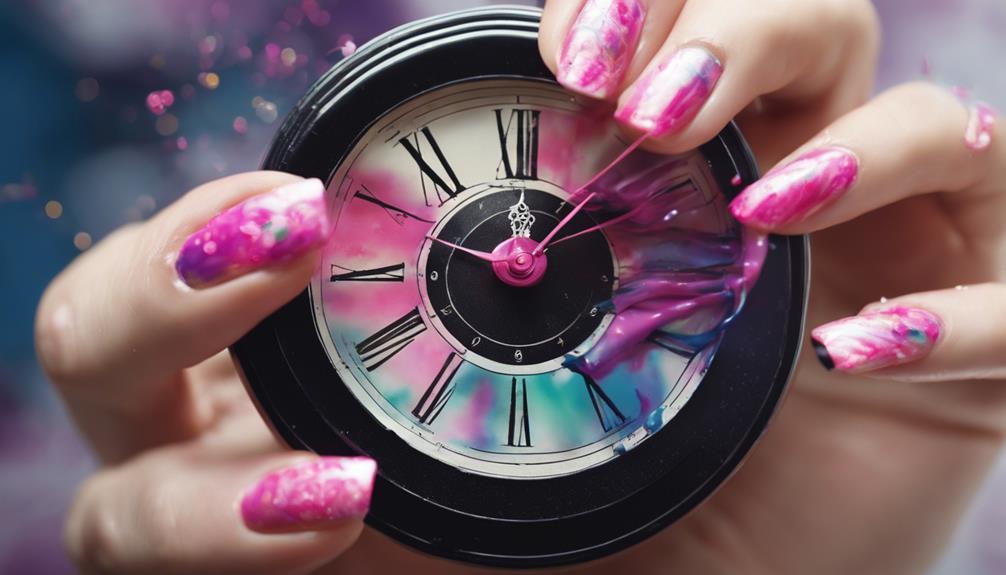
Factors that can influence the time it takes for nail polish to dry include the type of polish used, the number of coats applied, and the humidity in the environment. Different polish formulas have varying drying times, with quick-dry polishes setting faster than traditional ones. Applying multiple coats can extend drying time, so it's essential to allow each layer to dry properly. Moreover, high humidity levels in the air can slow down the evaporation of solvents in the polish, making the drying process longer.
| Type of Polish | Number of Coats | Humidity Level |
|---|---|---|
| Quick-Dry | 1 coat | Low |
| Traditional | 2 coats | Medium |
| Gel Polish | 3 coats | High |
Common Nail Drying Techniques
When drying your nails, consider the effectiveness of:
- Air drying
- Quick dry products
- Using fans
These techniques can help speed up the drying process and provide a glossy finish.
Experiment with different methods to find what works best for you.
Air Drying Effectiveness
Blowing on wet nails is a commonly used technique to help them dry faster. While this method can provide some assistance, it may not be the most effective way to speed up the drying process.
The effectiveness of air drying your nails depends on various factors such as the number of coats applied, the type of polish used, and the humidity levels in the environment.
For better results, consider waving your hands gently to promote airflow or using a fan on a low setting to help the polish set. Remember, patience is key when air drying your nails to avoid any smudges or imperfections.
Quick Dry Products
To speed up the drying process of your nails, consider utilizing quick dry products as a common and efficient nail drying technique. Quick dry products like nail drying sprays, drops, or quick-dry topcoats can significantly reduce the time it takes for your nail polish to set.
These products work by forming a protective layer over the nail polish, helping it dry faster while also adding a glossy finish. Simply apply the quick dry product according to the instructions on the packaging after painting your nails, and voilà – your nails will be dry in no time!
Quick dry products are convenient, easy to use, and a must-have for anyone looking to speed up their nail drying process.
Use of Fans
Consider using a fan to speed up the drying process of your nails, a common and effective nail drying technique. Fans help to circulate air around your freshly painted nails, allowing the polish to dry faster. Place your nails in front of a fan on a low setting for a few minutes to help set the polish and prevent smudges or dents. Fans provide a quick and easy way to dry your nails without the need for expensive products or time-consuming techniques.
Embrace the convenience and efficiency of using a fan to speed up the drying process, giving you more freedom to express yourself with beautifully painted nails in no time.
Pros and Cons of Blowing on Nails
When drying your nails, it can be tempting to blow on them to speed up the process, but there are both benefits and drawbacks to this common practice. The main advantage of blowing on your nails is that it can help to evaporate the nail polish solvent faster, leading to quicker drying times. This can be convenient when you're in a hurry and need your nails to dry quickly.
However, there are some downsides to this method as well. One drawback is that blowing on your nails can introduce moisture and oils from your breath onto the nail polish surface, which may cause smudges or affect the finish. Additionally, blowing on your nails can also increase the chances of dust or other particles sticking to the tacky polish, ruining your manicure.
Tips for Faster Nail Drying
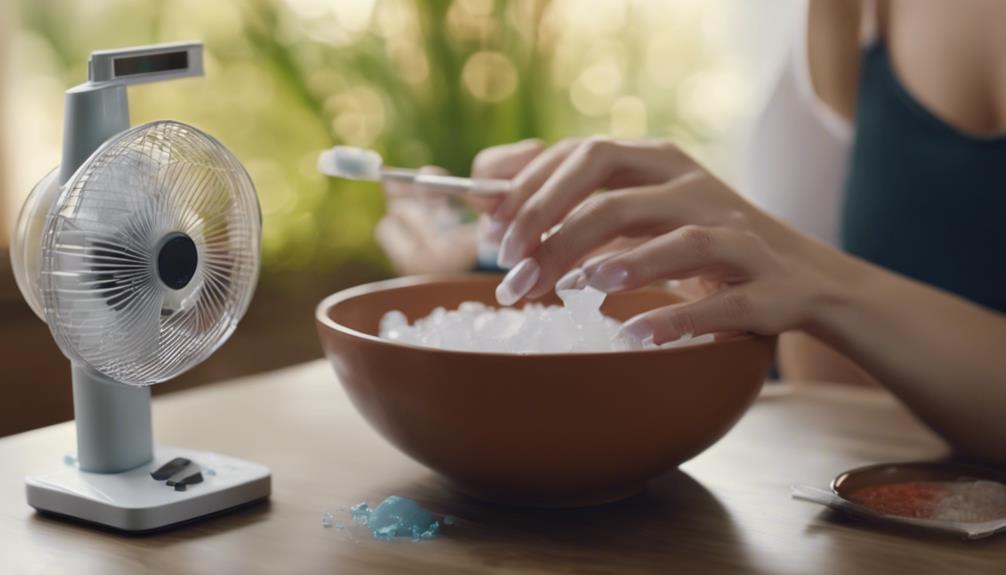
For quicker nail drying, gently fan your nails instead of blowing on them to prevent smudges and maintain a flawless finish. Blowing on wet nails can cause smudging and ruin your perfect manicure. To speed up the drying process, try using a fan or waving your hands gently back and forth. This method helps the polish set without creating any unwanted marks.
Another tip for faster nail drying is to dip your painted nails in cold water for a few minutes. The cold temperature helps solidify the polish more quickly, reducing the chances of smudging. You can also try applying thin layers of polish and waiting a couple of minutes between each coat to allow for faster drying.
Additionally, using quick-dry topcoats or sprays can significantly reduce the drying time of your nail polish. These products work by forming a hard protective layer over the polish, helping it dry faster while adding extra shine. Experiment with different techniques to find the one that works best for you and enjoy your beautiful, dry nails in no time.
Conclusion: Effective Nail Drying Methods
When it comes to effective nail drying methods, it's essential to consider options beyond blowing on your nails.
Experimenting with alternatives like quick-dry nail polish, cold water baths, or nail drying sprays can help speed up the drying process.
Blowing on Nails
Blowing on nails is a popular method believed to help them dry faster. While it may seem like a quick fix, blowing on your nails can actually do more harm than good. The moisture from your breath can interfere with the nail polish, causing bubbles or smudges.
Instead, consider using a fan to help speed up the drying process. Fans provide a gentle, consistent airflow that can help set the nail polish without causing any unwanted effects. If you're in a rush, try dipping your nails in ice-cold water for a few minutes. This can help solidify the polish and reduce the risk of smudging.
Alternatives to Blowing
Looking for efficient ways to dry your nails without causing smudges or bubbles? Here are some alternatives to blowing that will help your nail polish set quickly and beautifully:
- Quick-dry nail polish: Opt for nail polishes specifically designed to dry faster, saving you time and hassle.
- Nail drying spray: Use a nail drying spray to accelerate the drying process and leave your nails looking flawless.
- Cold water rinse: After letting your nails air dry for a bit, dip them in cold water to set the polish and prevent smudges.
- Fan or blow dryer: If you prefer a breeze, use a fan or a blow dryer set on cool to speed up the drying process without risking smudging.
Frequently Asked Questions
Can Blowing on Nails Actually Damage Them in Any Way?
Blowing on your nails might not intentionally damage them, but excessive force can weaken and dry them out. It's best to handle them gently and let them air dry or use a quick-dry topcoat.
Is There a Specific Distance or Angle at Which Blowing on Nails Is Most Effective for Drying?
When drying nails by blowing on them, aim for a moderate distance and angle. This technique can help speed up the drying process effectively without causing damage. Experiment with what works best for you.
Are There Any Alternative Methods to Blowing on Nails That Are Equally Effective?
When drying your nails, consider quick-dry sprays or setting them with a cool hairdryer. These methods provide efficient alternatives to blowing on your nails. Experiment and find what works best for you!
How Long Should One Typically Wait Before Blowing on Nails to Ensure They Are Dry Enough?
Wait until your nails are mostly dry before blowing on them to speed up the process. Be patient; rushing can cause smudges. Enjoy the freedom to experiment with different methods to find what works best for you.
Can Blowing on Nails Lead to Any Potential Health Risks or Concerns?
Avoid potential health risks by being mindful of harsh chemicals in nail products. Your well-being matters more than a quick dry. Prioritize self-care, embrace patience. Your nails will thank you for the tender care.



